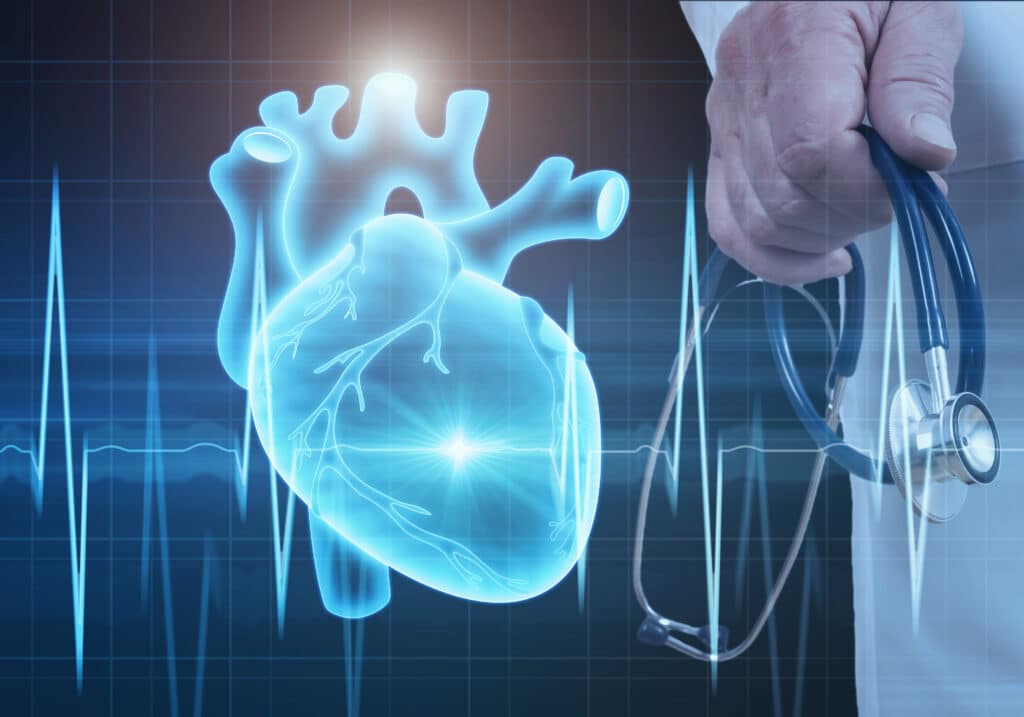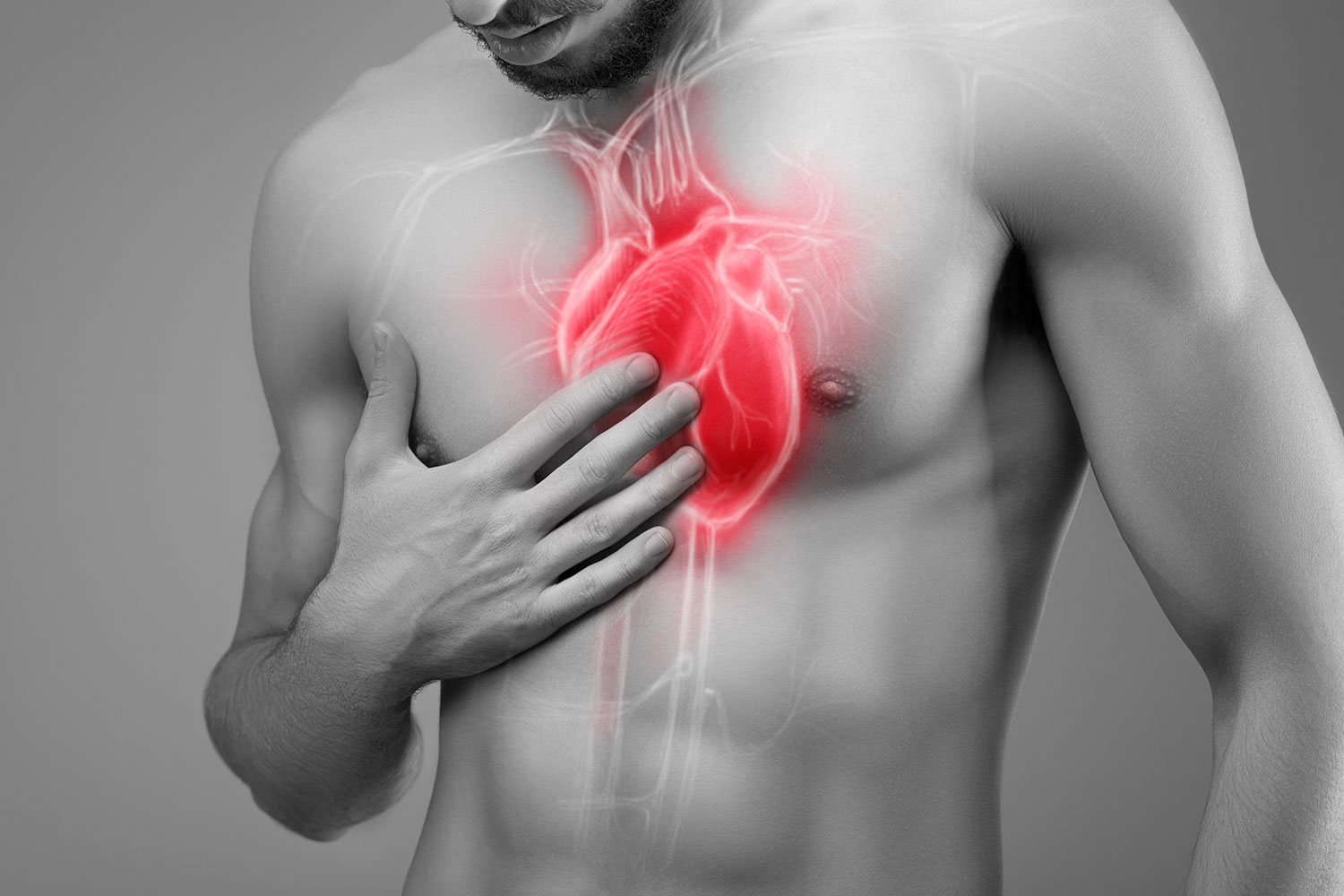The most common myths about Cardiology Jupiter, busted
The most common myths about Cardiology Jupiter, busted
Blog Article
Recognizing the Relevance of Cardiology in Modern Health Care Services
Cardiology plays an important role in modern medical care, specifically as heart condition remains to be the leading reason for death worldwide. Breakthroughs in diagnostics and therapy have transformed client care, making it possible for earlier treatments and enhanced outcomes. The change in the direction of preventive cardiology encourages individuals to manage their health proactively. As technology proceeds to evolve, the combination of innovative solutions might further redefine cardiology's effect on public health, prompting a better assessment of arising patterns and their implications.
The Frequency of Heart Disease and Its Influence On Public Wellness
Heart disease continues to be the leading cause of death worldwide, its influence prolongs much past private people to influence public wellness systems and economic climates. The high frequency of cardiovascular disease places a substantial stress on healthcare sources, necessitating boosted funding for therapy, prevention, and recovery programs. Public wellness initiatives have to resolve risk variables such as excessive weight, smoking, and inactive way of livings, which add considerably to the climbing incidence of heart conditions.Moreover, the economic problem connected with cardiovascular disease is tremendous, incorporating not only direct clinical costs yet likewise indirect expenditures connected to lost performance and premature death. Neighborhoods encounter obstacles in taking care of these prices, typically bring about variations in health care accessibility and end results. As the population ages and lifestyle-related threats proceed to intensify, the seriousness for efficient cardiology interventions becomes critical. Resolving heart disease is not just an issue of private wellness however also a critical public health priority.
Developments in Heart Diagnostics and Imaging Techniques
Current advancements in heart diagnostics and imaging methods have changed the field of cardiology, enhancing the capability to keep track of and identify cardiovascular disease. Strategies such as cardiac MRI, CT angiography, and echocardiography have come to be significantly sophisticated, supplying comprehensive photos of heart frameworks and features. These methods allow for the very early identification of conditions like coronary artery disease, heart failing, and valvular disorders.Moreover, improvements in non-invasive diagnostics, such as wearable modern technology and remote monitoring devices, have encouraged clients and health care suppliers. These tools facilitate real-time monitoring of heart rhythms and other important indicators, resulting in prompt treatments. Additionally, expert system is being incorporated into imaging evaluation, boosting accuracy and performance in diagnosis.
Advancements in Therapy Options for Heart Conditions
Recent advancements in cardiology have brought about significant innovations in treatment choices for heart disease. These include advanced medical methods that boost procedural outcomes and arising medications that use new opportunities for treatment. As the field advances, these developments play a vital duty in enhancing patient care and outcomes.
Advanced Surgical Techniques
Advancements in surgical methods have actually transformed the landscape of cardiology, offering brand-new hope for patients with heart conditions. Minimally intrusive procedures, such as catheter-based interventions, have greatly lowered healing times and health center keeps. Methods like robotic-assisted surgical procedure enhance precision, allowing specialists to navigate intricate physiological frameworks with higher precision. Improvements in imaging innovation help with real-time visualization throughout procedures, boosting end results. Transcatheter aortic valve substitute (TAVR) exemplifies an advancement in treating aortic constriction, enabling shutoff replacement without open-heart surgical procedure. Additionally, hybrid approaches that integrate catheter-based and medical methods offer customized remedies for different cardiac problems. These sophisticated medical methods not only boost person safety yet likewise increase therapy alternatives, highlighting the critical function of technology in contemporary cardiology methods.
Arising Therapies and medications
As the landscape of cardiology proceeds to advance, emerging treatments and medicines play an essential role in boosting treatment alternatives for heart problems. Developments such as novel anticoagulants and advanced lipid-lowering agents have actually transformed the administration of cardiovascular diseases, substantially decreasing patient morbidity and mortality. Furthermore, the development of gene therapies and regenerative medication supplies appealing methods for treating conditions formerly considered incurable. Clinical tests are continuously revealing the efficiency of these treatments, pushing the boundaries of traditional therapies. Moreover, the integration of digital health modern technologies helps with customized medication, enabling tailored therapy strategies based upon genetic and way of life variables. Jointly, these innovations highlight the dynamic nature of cardiology, enhancing person results and redefining requirements of treatment in modern-day health care.
The Duty of Preventive Cardiology in Person Care
Precautionary cardiology plays a crucial role in individual care by concentrating on the recognition of risk variables that contribute to heart problem. Via way of life modification techniques and very early detection strategies, doctor can successfully minimize the incidence of cardiovascular occasions - Cardiology. This positive strategy not just boosts person results but additionally promotes lasting health and wellness
Risk Variable Identification
While cardiovascular illness remain a leading root cause of morbidity and mortality worldwide, effective danger aspect recognition works as a cornerstone of preventive cardiology. Determining threat factors such as hypertension, family, diabetic issues, and hyperlipidemia history is vital for very early treatment. Healthcare experts utilize various screening techniques to evaluate these variables, permitting for customized safety nets. Additionally, understanding a patient's way of life selections, such as cigarette smoking and physical inactivity, further educates risk analyses. This thorough assessment enables clinicians to establish customized care plans targeted at mitigating threats. By prioritizing threat variable recognition, healthcare systems can improve patient results and reduce the general problem of cardiovascular diseases, ultimately adding to enhanced public wellness methods and resource appropriation.
Lifestyle Adjustment Strategies
A multitude of research studies highlights the essential function of lifestyle adjustment techniques in lowering cardiovascular illness threat. These strategies encompass nutritional adjustments, increased exercise, smoking cigarettes cessation, and weight management. By adopting a heart-healthy diet plan rich in fruits, veggies, whole grains, and lean healthy proteins, people can lower cholesterol levels and blood stress. Regular physical activity reinforces the heart and enhances total cardiovascular wellness. In addition, quitting cigarette smoking greatly minimizes the danger of heart problem and enhances healing prices for those with current problems. Weight monitoring better adds to cardiovascular health by minimizing other danger variables such as diabetes mellitus and hypertension. Implementing these lifestyle changes not just promotes specific wellness however likewise acts as a keystone of preventive cardiology in patient care.
Early Detection Techniques
Lifestyle modifications significantly add to lowering heart disease dangers, yet they are most reliable when combined with early discovery strategies. Preventative cardiology stresses the relevance of recognizing possible heart concerns prior to they escalate right into major conditions. Techniques such as high blood pressure surveillance, cholesterol screening, and advanced imaging technologies like echocardiograms play vital duties in evaluating cardiovascular health. Biomarkers and hereditary screening also boost the precision of very early detection, enabling customized precautionary methods. Normal cardiac threat evaluations empower doctor to interfere proactively, potentially stopping heart assaults and strokes (Cardiologist near me). By integrating these very early discovery techniques right into routine care, people can gain from prompt way of living treatments and targeted treatments, eventually enhancing results and boosting high quality of life
Integrating Innovation Into Cardiology Practices
As innovations in modern technology remain to improve different fields, the combination of innovative devices and systems into cardiology techniques has actually ended up being essential for improving patient treatment and end results. Telemedicine platforms allow cardiologists to check clients from another location, enhancing accessibility to care while reducing the problem on medical care facilities. Wearable gadgets, such as smartwatches, make it possible for continual heart price monitoring, signaling both individuals and doctors to possible concerns in real-time. In addition, expert system (AI) is being made use of to analyze huge quantities of heart data, assisting in early medical diagnosis and personalized treatment plans. Advanced imaging techniques, including 3D echocardiography, boost visualization of heart structures, causing more specific interventions. Electronic health records (EHRs) enhance individual info management, guaranteeing that cardiologists have immediate accessibility to critical information. With each other, these technological innovations are transforming cardiology, promoting aggressive monitoring and improved health and wellness end results for people with cardiovascular problems.
The Significance of Individual Education And Learning and Engagement
Person education and learning and engagement play an essential function in the monitoring of cardiovascular health and wellness. By outfitting people with knowledge concerning their conditions, treatment options, and way of life modifications, healthcare service providers equip individuals to take an energetic duty in their care. This proactive approach can cause enhanced adherence to recommended medications, dietary changes, and workout regimens, ultimately minimizing the threat of complications.Engagement additionally fosters a solid patient-provider relationship, urging open interaction and depend on. When clients feel informed and included, they are extra likely to voice worries and ask questions, which can lead to far better medical results. Additionally, academic resources, such as workshops or digital systems, can improve understanding and promote self-management approaches. On the whole, prioritizing client education and learning and engagement is important for enhancing cardio wellness, boosting lifestyle, and lowering health care prices linked with cardio illness.
Future Patterns in Cardiology and Their Potential Impact

Regularly Asked Questions
What Way Of Living Adjustments Can Reduce Heart Problem Risk?
The current concern addresses way of life changes that can considerably reduce heart disease danger. Cardiology. Taking on a balanced diet regimen, taking part in normal exercise, maintaining a healthy and balanced weight, handling stress and anxiety, and preventing tobacco can notably improve cardiovascular wellness
Just How Can I Recognize Early Signs of Heart Problems?
Acknowledging early indications of heart issues involves monitoring signs such as breast discomfort, shortness of breath, tiredness, and uneven heart beat. Prompt understanding of these indicators can prompt necessary medical examination and intervention for far better results.
What Are the Differences In Between Cardiologists and Cardiac Surgeons?
The differences in between cardiologists and cardiac specialists hinge on their duties; cardiologists mainly manage and detect heart problems with non-invasive approaches, while heart doctors perform surgeries to correct structural heart issues. Each plays an image source important, distinctive duty.

Just how Often Should I Get My Heart Health Checked?
The regularity of heart health checks differs based on specific threat factors. Usually, grownups must undergo evaluations each to 2 years, while those with status quo may call for even more frequent assessments as encouraged by healthcare professionals.
What Duty Does Genetics Play in Heart Illness Danger?
Genetics significantly influences heart problem danger, with domestic patterns indicating inherited conditions. Particular genetics can incline people to high blood pressure, cholesterol concerns, and other cardiovascular troubles, highlighting the relevance of hereditary screening in evaluating heart wellness. Heart condition stays the leading cause of death around the world, its influence expands much past private clients to impact public health systems and economic climates. Public health initiatives have to resolve threat variables such as obesity, cigarette smoking, and less active way of livings, which add significantly to the increasing incidence of heart conditions.Moreover, the economic concern linked with heart disease is tremendous, including not just straight clinical prices however also indirect expenditures associated to lost performance and early mortality. Preventive cardiology plays an important role in patient treatment by concentrating on the identification of risk elements that contribute to heart disease. Fabricated knowledge (AI) and device learning are enhancing diagnostics and patient tracking, allowing very early detection of heart illness. The distinctions between cardiologists and cardiac specialists lie in their functions; cardiologists mostly identify and handle heart conditions with non-invasive approaches, while heart doctors visit homepage execute surgical procedures to remedy architectural heart concerns.
Report this page